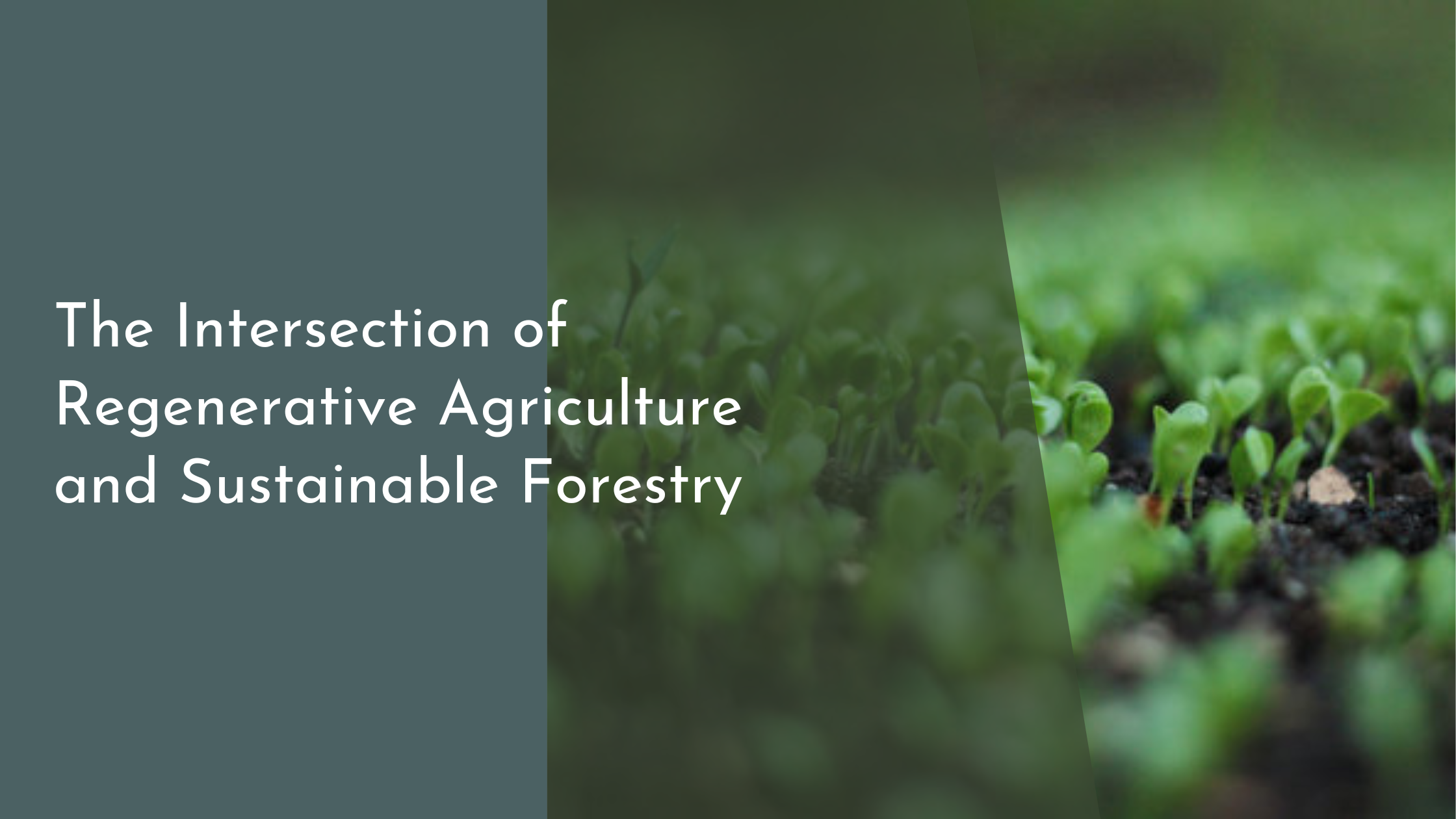The Intersection of Regenerative Agriculture and Sustainable Forestry
In recent years, the conversation around sustainable practices has gained significant momentum, with both regenerative agriculture and sustainable forestry emerging as pivotal components of a more environmentally-conscious landscape. While both fields aim to restore and sustain natural ecosystems, they have typically been discussed in isolation. However, the intersection of regenerative agriculture and sustainable forestry offers a promising frontier for achieving a greener future. This article delves into the basics of these practices, explores their principles, and highlights the synergies between them.
Understanding Regenerative Agriculture Basics
Regenerative agriculture is a conservation and rehabilitation approach to farming systems that focuses on enhancing the health and vitality of farm soil. It eschews the use of synthetic fertilizers and pesticides in favor of practices that promote soil biodiversity and health. Techniques like crop rotation, cover cropping, and no-till farming not only rejuvenate soil but also increase its ability to retain carbon and water, essential elements in combating climate change. This kind of agriculture aims to create a closed-loop system where waste is minimized, and resources are used efficiently.
One of the primary goals of regenerative agriculture is to restore the natural cycles of ecosystems. By fostering diverse microbial life in soils, the approach seeks to increase nutrient availability for crops, thus enhancing both yield and resilience. This has a cascading effect on the environment, as healthier plants lead to enhanced carbon sequestration, improved water cycles, and greater biodiversity. Regenerative agriculture is not simply about sustainability; it’s about making the land more productive and resilient over time.
Exploring Principles of Sustainable Forestry
Sustainable forestry is a management approach that aims to maintain and enhance the long-term health of forest ecosystems. This involves a careful balancing act of harvesting timber and other forest resources while ensuring the forest can continue to provide ecological, economic, and social benefits. Key principles include maintaining biodiversity, protecting water quality, and promoting ecosystem resilience. Sustainable forestry practices are designed to ensure that forest areas remain viable for future generations, while also meeting current needs.
One of the defining features of sustainable forestry is its commitment to mimicking natural processes. This includes selective logging, which removes specific trees to minimize impact and promote the growth of younger trees, and controlled burns, which can help reduce the risk of uncontrolled wildfires and enhance soil fertility. By maintaining a healthy forest structure and function, sustainable forestry contributes to carbon sequestration, helps in climate regulation, and supports a diverse range of wildlife habitats.
Synergies Between Agriculture and Forestry
At their core, both regenerative agriculture and sustainable forestry share a similar ethos: the renewal and conservation of natural resources. Integrating these practices can lead to a harmonious coexistence where agricultural lands are bordered by thriving forests, each enhancing the other’s productivity. For instance, agroforestry, a practice that combines agriculture and tree cultivation, leverages the benefits of trees to improve soil health and farm yield. Trees can provide shade, reduce wind erosion, and return essential nutrients to the soil, making farms more resilient and productive.
Moreover, both practices contribute to greater biodiversity and climate resilience. Trees within agricultural systems can serve as habitats for pollinators and other beneficial wildlife, which in turn supports crop productivity. The shared focus on carbon sequestration means that when integrated, these systems can significantly reduce atmospheric carbon levels. The combination of these practices allows for a more holistic management of landscapes, enhancing ecosystem services like water purification, soil fertility, and climate regulation.
Concluding Thoughts on a Greener Future
The marriage of regenerative agriculture and sustainable forestry represents not just a fusion of techniques, but a paradigm shift in how we view land management. It invites us to see agricultural fields and forests not as isolated entities, but as interconnected systems that can benefit from each other’s natural processes. This integrated approach provides multiple benefits including enhanced biodiversity, better resource utilization, and greater resilience against climate change, all while supporting human livelihoods.
As global challenges such as climate change and food security intensify, the adoption of these practices could pave the way for a more sustainable and resilient planet. By investing in the intersection of regenerative agriculture and sustainable forestry, we are not only preserving our natural resources but actively enhancing them for future prosperity. The path forward is clear: a collaborative approach in managing our landscapes can lead to a more vibrant, sustainable world.
In essence, the intersection of regenerative agriculture and sustainable forestry is a promising frontier for ecological and economic innovation. By embracing the synergies between these two disciplines, we open the door to creating healthier ecosystems, stronger communities, and a more sustainable planet. As these practices gain traction, they offer a hopeful blueprint for a future where humanity and nature thrive together. Here’s to a greener, more harmonious future!

